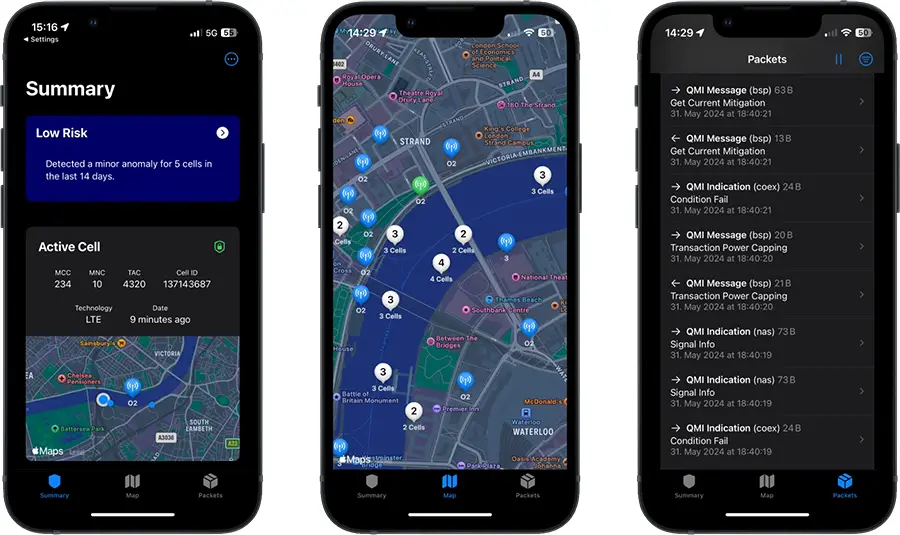
Scientists from SEEMOO Lab have developed a groundbreaking application called CellGuard, designed to detect suspicious activities within cellular networks and identify attacks targeting iPhones. The primary function of CellGuard is to uncover rogue base stations, which may be used by malicious actors to track location, intercept traffic, and carry out other attacks on mobile devices.
A rogue base station (RBS) is a malicious cell tower that deceives a device into forcibly connecting to it. Such stations are particularly vulnerable in 2G networks, where connection authentication is absent, similar to the risks associated with open Wi-Fi networks. To safeguard against this, experts recommend disabling 2G on iPhones while in lockdown mode.
CellGuard analyzes the packets exchanged between the base station and the device, using several key metrics. These include cross-referencing the tower with Apple Location Services (ALS) databases, analyzing the distance between the user and the tower, and examining frequency, bandwidth, and signal strength. These indicators help detect anomalies and identify suspicious towers.
However, the developers caution that many alerts may be false positives due to legitimate network anomalies. For instance, new base stations may not immediately appear in Apple’s database, and during high-traffic periods, some towers intentionally reduce bandwidth. Signal strength can also fluctuate depending on environmental conditions.
Despite the possibility of false alarms, CellGuard remains a reliable tool for identifying potential threats. Currently in beta testing, the app’s developers encourage users to try the new technology by installing it on their iPhones, even in lockdown mode.
CellGuard represents a significant step toward protecting users from potential threats posed by rogue base stations, though the likelihood of such attacks remains low. Users can take simple precautions, such as enabling airplane mode, to further minimize risks.


